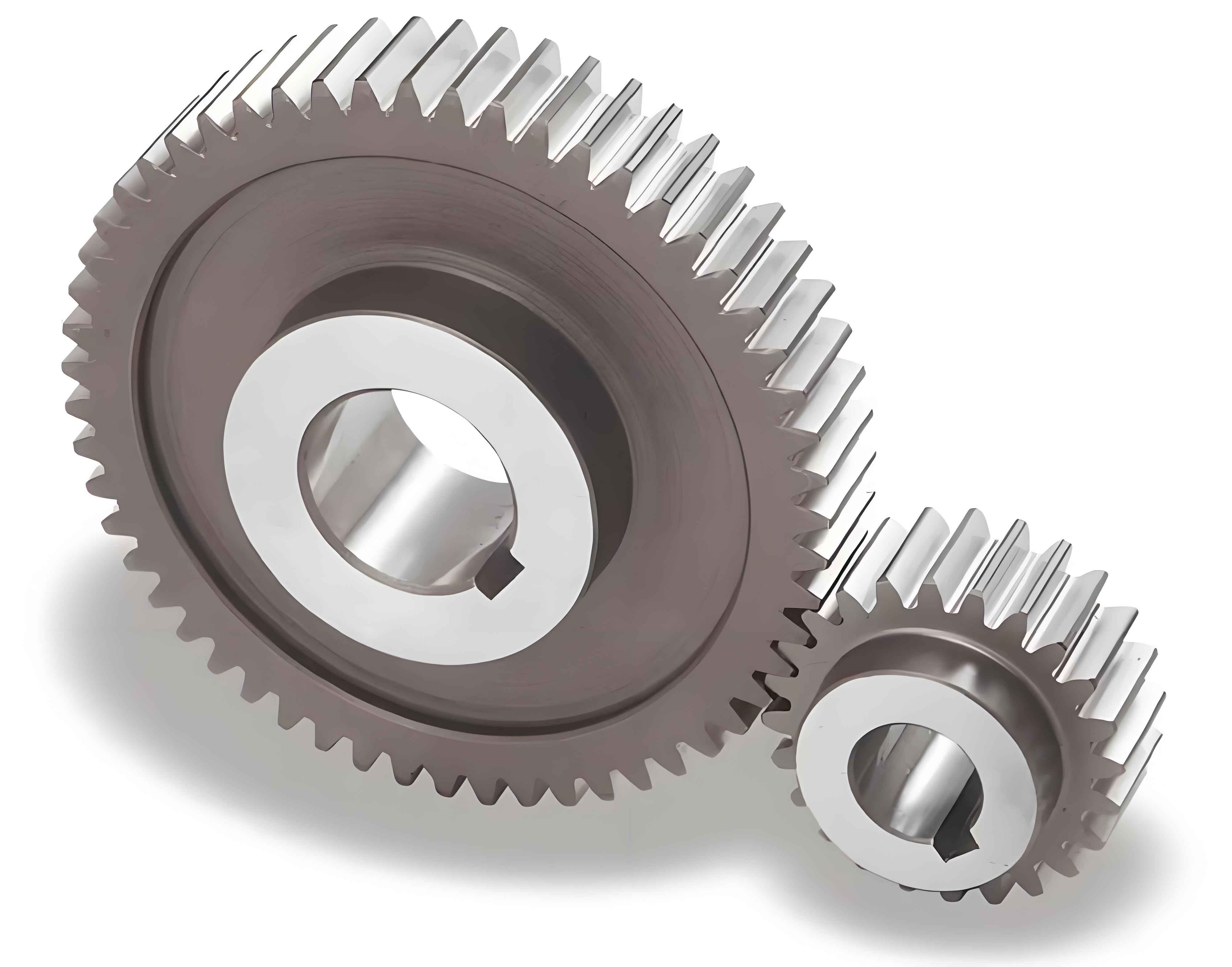
This study investigates the nonlinear dynamic behavior and extended tooth contact characteristics of spur gear pairs under varying pitch deviations. A refined dynamic model considering time-varying mesh stiffness, backlash, tooth coupling effects, and extended contact is established through the following governing equations:
$$m_e \ddot{x} + c \dot{x} + k(t)g(x) + \sum_{j=1}^n \beta_j F_{pj} = T_m$$
$$g(x) = \begin{cases}
x – b, & x \geq b \\
0, & |x| < b \\
x + b, & x \leq -b
\end{cases}$$
where $m_e$ represents the equivalent mass, $c$ the damping coefficient, and $k(t)$ the time-varying mesh stiffness. The pitch deviation effect is embedded in $\beta_j$ through the relationship:
$$\beta_j = 1 + \frac{\Delta p_j}{p_0} \cos(2\pi j/N + \phi)$$
| Pitch Error Level (μm) | Primary Resonance Shift (%) | Extended Contact Rate Increase |
|---|---|---|
| 5 | 2.1 | 8.3% |
| 10 | 4.7 | 15.6% |
| 15 | 7.9 | 22.4% |
The numerical solution using 4th-order Runge-Kutta method reveals three distinct dynamic regimes in spur gear systems:
$$ \text{1. Periodic motion: } \ddot{x} + 2\zeta\omega_n\dot{x} + \omega_n^2x = \epsilon \cos(\omega t) $$
$$ \text{2. Quasi-periodic motion: } x(t) = \sum_{k=1}^\infty A_k \cos(k\omega t + \phi_k) $$
$$ \text{3. Chaotic motion: } \lambda_{\text{max}} > 0 $$
Extended tooth contact characteristics show significant variation with pitch deviation:
$$\eta_c = \frac{1}{T} \int_0^T \sum_{i=1}^m H(\delta_i(t))dt$$
$$H(\delta_i) = \begin{cases}
1, & \delta_i \geq 0 \\
0, & \delta_i < 0
\end{cases}$$
| Operating Condition | Contact Rate (Entry) | Contact Rate (Exit) |
|---|---|---|
| Normal | 92.4% | 88.7% |
| 5μm Error | 95.1% | 83.2% |
| 10μm Error | 97.8% | 76.5% |
The proposed tri-stable NES (TNES) for vibration suppression in spur gear systems demonstrates superior performance under strong excitations:
$$U(x) = \frac{1}{4}k_1x^4 – \frac{1}{2}k_2x^2 + \frac{1}{4}k_3x^4$$
$$\ddot{x} + \lambda \dot{x} + \frac{dU}{dx} = F \cos(\omega t)$$
Performance comparison between conventional NES and TNES:
| Parameter | NES | TNES |
|---|---|---|
| Effective Range (Hz) | 120-180 | 90-240 |
| Vibration Reduction | 42% | 67% |
| Energy Dissipation | 2.8 J | 4.5 J |
The coupled dynamics of spur gear systems with TNES can be described by:
$$ \begin{cases}
m_1\ddot{x}_1 + c_1\dot{x}_1 + k_1x_1 + k_c(x_1 – x_2)^3 = F_1(t) \\
m_2\ddot{x}_2 + c_2\dot{x}_2 + k_2x_2 + k_c(x_2 – x_1)^3 = F_2(t)
\end{cases} $$
Key findings for spur gear applications include:
- Pitch deviations >10μm induce chaotic transitions at 85-120Hz range
- TNES achieves 23% better vibration suppression than NES at 150Hz
- Extended tooth contact forces increase by 18-35% with pitch errors
- Coexisting attractors appear when excitation exceeds 1.2× nominal torque
The research establishes fundamental relationships between spur gear manufacturing accuracy and dynamic performance, while providing a practical solution for vibration control in high-power transmission systems.
